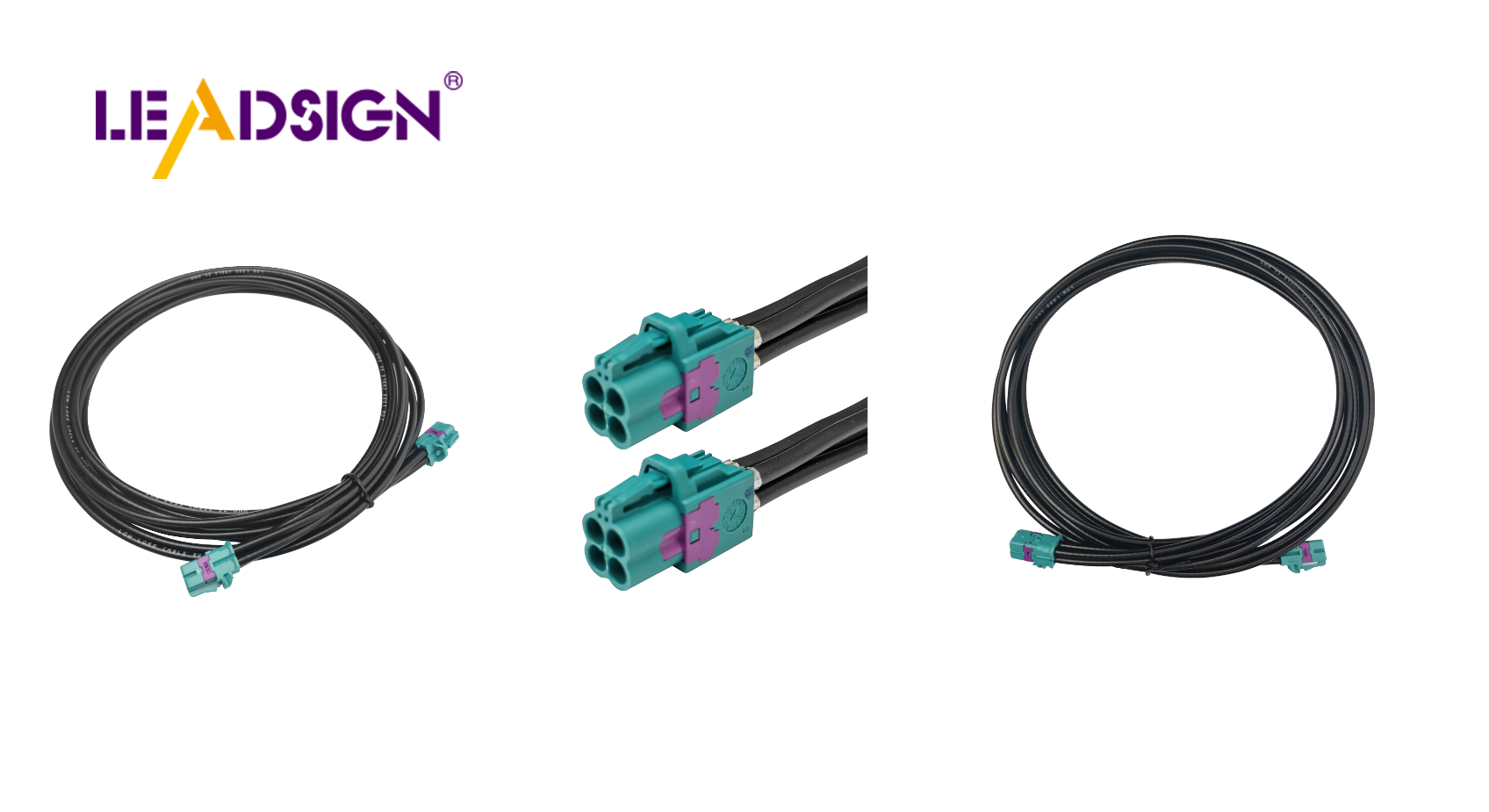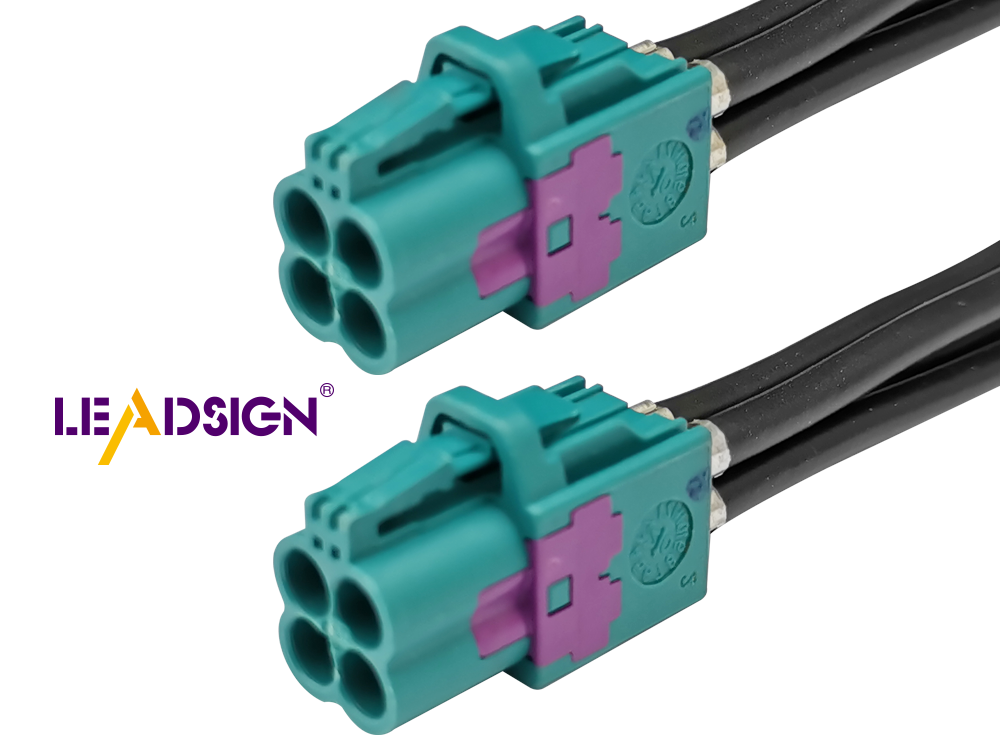Understanding Automotive Wiring Connector Types

Car wiring connectors are very important for your car's electric system. They connect different parts to work well together. Understanding the various automotive electrical connectors types is key for each use, as it impacts how well and reliably your car operates. For example, a broken connector in a crash can cause electric problems. You need to know about different car connectors to choose wisely. This knowledge helps keep your car working well and safe.
Basics of Automotive Wiring Connectors
Role and Importance
Ensuring Electrical Connectivity
Car wiring connectors are key for keeping electricity flowing in your car. They link different parts, making sure power moves smoothly. Without them, your car's electric system wouldn't work right. Circular connectors help send power and data safely, so they are very important. Picking the right connector makes your car run well.
Impact on Vehicle Performance
Your car works best with good wiring connectors. Bad ones can cause electric problems, affecting the engine and lights. Automotive Wire Harness Connectors like B85C3 handle tough jobs in cars today. They make sure all systems work together, boosting performance. Knowing about these helps you choose better for your car's reliability.
Common Applications
Engine Systems
In engines, connectors join sensors and controls. They give the engine correct info to work well. For example, they send signals from oxygen sensors to control units for better fuel use. Good connectors lower engine issues and save fuel.
Lighting and Accessories
Connectors also help with lights and extras in cars. They link headlights, taillights, and inside lights to keep them working right. Plus, they power things like radios and GPS units by sending data too. Choosing good connectors improves how these parts work safely.
Detailed Types of Connectors

Knowing different car connectors is important for your car's health. Each type has a special job and helps in unique ways. Let's look at some common connector types in cars.
Blade Connectors
Description and Uses
Blade connectors, also called spade connectors, have a flat metal piece that fits into a slot. They are used for quick connections. You use them when you need to disconnect and reconnect parts often. Blade connectors keep the electric flow steady.
Examples in Automotive Systems
In cars, blade connectors are found in light circuits. They connect headlights and taillights, making bulb changes easy. You also see them in fuse boxes for simple fuse access.
Pin Connectors
Description and Uses
Pin connectors have pins that fit into sockets. They are small and good for tight spaces. Use pin connectors when you need a strong connection. They send signals and power well in cars.
Examples in Automotive Systems
You find pin connectors in engine control units (ECUs). They link sensors and actuators for good engine data flow. Pin connectors also join wiring harnesses to connect many car systems.
Butt Connectors
Description and Uses
Butt connectors join two wires end-to-end smoothly. They keep electricity flowing without breaks. Use butt connectors to fix or extend wires easily.
Examples in Automotive Systems
In cars, butt connectors help fix broken wires by joining ends together again. This fixes the electric path without big rewiring jobs. Use them for custom installs like adding new gadgets.
FAKRA Connectors
Description and Uses
FAKRA connectors are important in new cars. They are used where high-speed signals are needed. These connectors send data well, which is key for modern car tech. FAKRA connectors have a lock to stop them from coming apart by accident. This makes them great for places needing strong connections. You can trust FAKRA connectors because they last long and handle tough conditions.
In the world of car wiring, FAKRA connectors are special due to their design. They have colors that help you match them easily when setting up. This lowers the chance of wrong connections, keeping your car's systems working right. FAKRA connectors work with many frequencies, making them useful for different jobs. Use them in systems needing fast data, like maps and music players.
Examples in Automotive Systems
You often see FAKRA connectors in many car systems. They are used in GPS and radio systems to send high-speed signals. These connectors help your map system get correct info so you can find your way easily. In car wiring types, FAKRA connectors are key for these systems to work well.
Another use is in driver help systems. They link cameras and sensors to the main computer, allowing features like lane warnings and smart cruise control. With FAKRA connectors, these systems get the data they need to work right. This makes driving better and safer.
FAKRA connectors also work in back-seat entertainment setups. They carry sound and video signals for a smooth fun time for passengers. Picking good car wiring types like FAKRA boosts how well your car's entertainment works.
How to Install Connectors
Knowing how to put in automotive electrical connectors types is important. It helps your car's electric system work well. Good installation makes them last longer too. Let's look at some ways to install them.
Crimping
Crimping joins wires with connectors tightly. You press the connector onto the wire for a strong link.
Tools You Need
To crimp, you need these tools:
Crimping Tool: This tool presses the connector right.
Wire Strippers: They take off the plastic cover on wires.
Connectors: Pick the right one for your job.
Steps to Crimp
Strip Wire: Remove about 1/4 inch of cover from wire end.
Put Wire In: Slide bare wire into connector hole.
Place Connector: Fit it in crimping tool's grip.
Press Connector: Squeeze tool hard to hold wire tight.
Check Connection: Make sure wire is snug and firm.
Soldering
Soldering makes a lasting join between wires, often used for strong connections.
Tools You Need
For soldering, get these tools:
Soldering Iron: Heats up solder for joining wires.
Solder: Metal that sticks wires together.
Heat Shrink Tubing: Covers and protects soldered part.
Steps to Solder
Get Wires Ready: Strip ends and twist them together.
Warm Joint Up: Use iron to heat twisted wires.
Add Solder: Touch solder until it melts over wires.
Let Cool Down: Wait for solder to harden and cool.
Cover Joint: Slide tubing over joint and shrink it with heat.
Using Connector Blocks
Connector blocks help join many wires easily in cars.
Tools You Need
You'll need these tools:
Screwdriver: Tightens screws on block.
Wire Strippers: Prepares ends of wires by removing cover.
Connector Block: Choose one that fits your wiring needs.
Steps to Use Blocks
Strip Wires Off Cover
Place each wire into its spot in block
Tighten screws so they hold wires tight
Check all are secure and firm
Learning these ways helps keep connectors working well in cars, whether crimping, soldering or using blocks!
Maintenance and Troubleshooting
Regular Check Tips
Check your car's connectors often. This keeps them working well. It stops surprise electric problems.
Spotting Damage
Look for damage on connectors. See if there are cracks, color changes, or bends. These show the connector might not work right. Look at the outside and pins closely. If damaged, think about getting a new one to keep things working well.
Cleaning Methods
Clean connectors for best performance. Dirt can mess up connections. Use a soft brush or air to clean dust off. For tough dirt, use gentle cleaner. Make sure they are dry before putting back to stop water problems.
Common Problems and Fixes
Knowing common connector problems helps fix them fast. This keeps your car's electric system good.
Loose Connections
Loose parts can cause power issues sometimes. To fix, make sure all parts are tight together. You may need to crimp or solder for better hold. Crimping squeezes wire and end tight for strong link. Soldering needs care but makes strong join too. Pick what works best for you.
Stopping Rust
Rust can hurt how connectors work a lot. Stop it by using special grease on them. This grease blocks water and dirt from getting in. Check often for rust signs like green or white stuff. If you see rust, clean well and add grease to protect.
Knowing about car wiring connectors is important for your car. Picking the right ones makes sure your car works well. You need to choose connectors that fit what your car needs, like for engines or lights. How you put them in, like crimping or soldering, matters a lot too. Checking them often stops problems like loose parts and rust. By learning these things, you keep your car running nicely and safely, so you feel good on every drive.
See Also
Understanding HSD Connectors Essential for Automotive Applications
Why Fakra Connectors Are Crucial for Today's Vehicles
A Comprehensive Overview of Ford Fakra Connectors

